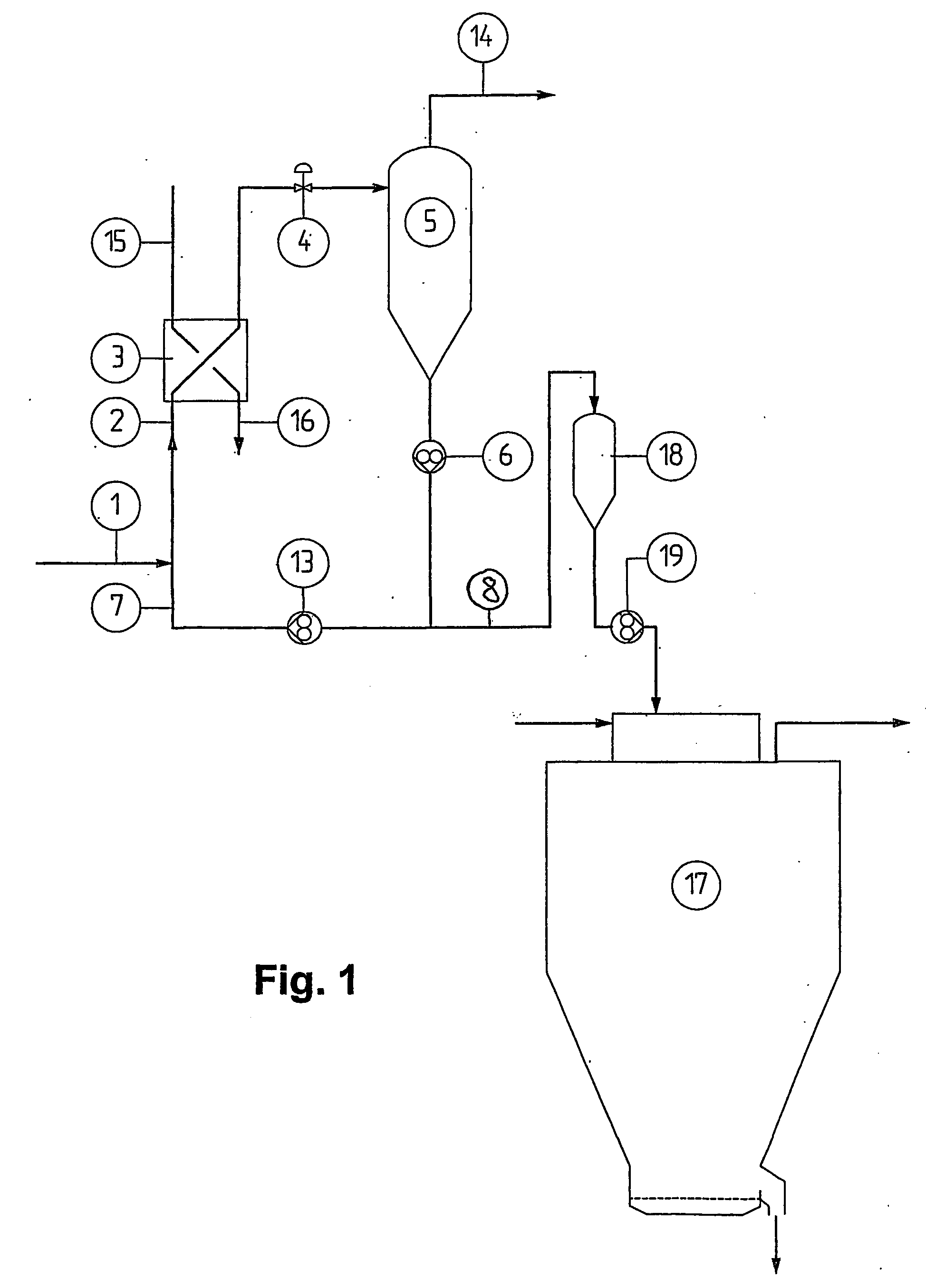Method and a system for converting liquid products into free-flowing powders with pre-cooling
a technology of liquid products and free-flowing powders, which is applied in the field of method and system for converting liquid products into free-flowing powders with precooling, can solve the problems of unfulfilled process demand, high viscosity of whey paste from the evaporator, and difficult handling and disintegration in the spin flash dryer,
- Summary
- Abstract
- Description
- Claims
- Application Information
AI Technical Summary
Benefits of technology
Problems solved by technology
Method used
Image
Examples
example
[0053] The feed material for the experiment was pre-treated rennet cheese whey with 6,00% total solids and permeate from the production of milk protein by ultrafiltration of sweet whey with 5,50% total solids.
[0054] In all Experiments whey or permeate was pre-concentrated in a multistage MVR falling film evaporator with 50 mm tubes of 18 m length as described by e.g. Knipschildt in Modern Dairy Technology (Ed. Robinson) 1986, Vol 1, p. 147 ff.
[0055] The experiments were performed according to the invention in a system as the one illustrated in the drawings. The concentrate from the falling film evaporator (not shown in the drawings) was fed to the recirculation line of a suppressed boiling forced circulation plate evaporator. After heating the separation process took place in a flash separator (a Single effect Paraflash, manufactured by APV Separation Processes). The concentrate from the exit line was then led to the cooler and subsequently fed directly to a spray dryer.
1 Feed kg / h ...
PUM
| Property | Measurement | Unit |
|---|---|---|
| temperature | aaaaa | aaaaa |
| temperature | aaaaa | aaaaa |
| temperature | aaaaa | aaaaa |
Abstract
Description
Claims
Application Information
 Login to View More
Login to View More - R&D
- Intellectual Property
- Life Sciences
- Materials
- Tech Scout
- Unparalleled Data Quality
- Higher Quality Content
- 60% Fewer Hallucinations
Browse by: Latest US Patents, China's latest patents, Technical Efficacy Thesaurus, Application Domain, Technology Topic, Popular Technical Reports.
© 2025 PatSnap. All rights reserved.Legal|Privacy policy|Modern Slavery Act Transparency Statement|Sitemap|About US| Contact US: help@patsnap.com

